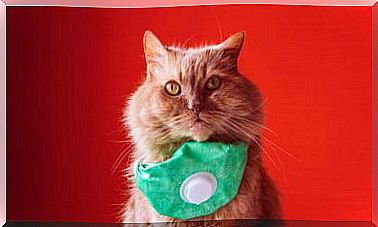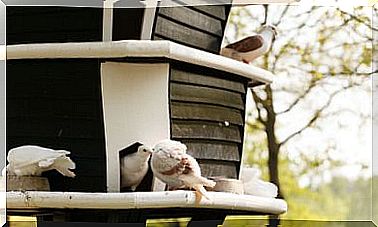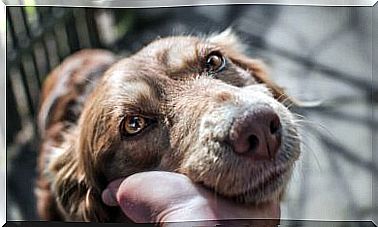Independent Pets
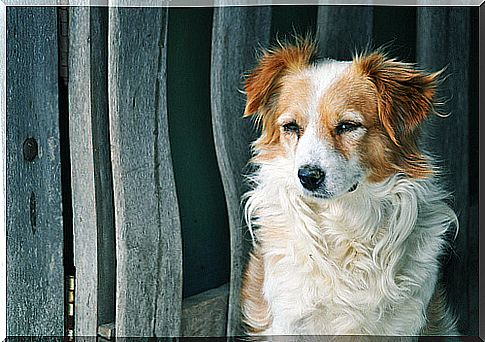
Much is often said about the care, intelligence and qualities of our pets. But generally, we focus on the behavior of our dogs and cats when they interact with us. You might wonder: do we really have independent pets?
For sure, the only way to answer this question is to check what their response looks like when we leave them home alone. In addition, all species show different behaviors, some being more dependent and others totally self-sufficient.
The following information will totally change our perspective, especially when it comes to going on vacation and leaving our four-legged friend at home.
Domestication vs Independence
The history of animal domestication is precisely a history of dependency. In fact, research biologists believe that today’s dogs are the evolution of wolves. Of those who approached human settlements in search of food.

Therefore, the more domesticated an animal is, the more difficult it will be for it to solve most of its problems on its own. This happens a lot, for example, with animals that are in captivity when it comes to introducing them into their natural ecosystems, as wild.
This is perhaps the basic criterion that must be met before tackling such a complicated and relative subject, such as that of independent pets. This does not mean that some species have the ability to be self-sufficient when we are not.
Who is more independent: the dog or the cat?
Obviously, it is good to compare the level of independence of the two domestic species par excellence. And, to tell the truth, there are many reasons that place the cat as the clear favorite when faced with this question.
Cats are solitary by nature and are used to circling entire buildings without having to interact with us. All of this is possible thanks to your instincts and the potential of your own unique physical abilities.
In contrast, dogs appear to be instinctively designed to interact with humans in search of food, protection, and emotional stability. A dog without its owner will have problems feeding well and, above all, it will be a sad canine.
Dogs cannot be away from their masters for long
It is proven that loneliness for long periods of time generates negative and noticeable impacts on domestic dogs. Specialists even speak of abandonment anxiety, and it is believed that 8 hours is the time limit that we can leave only the “man’s best friend” at home.
The effects of stress on canines are increased motor activity, excessive barking and crying. To this we add the predisposition to defecate and urinate in non-recurring or prohibited places within their discipline.
And, to be honest, all these symptoms of stress are evident when we leave our pet alone. The reactions will depend on variables such as the dog’s age, breed, behavioral aspects and training. But, in essence, these are not independent animals.
The cat is definitely a little more independent
Unlike dogs, cats have greater facilities to stay well while we are not at home. Their interactions with human beings can be very complex and close, but they do not depend on their masters to feel safe.
Probably, if we leave them alone for a few days, we will find their food container and litter box intact and without any modifications. To complete, these clean themselves and their movements are much finer. We are definitely talking about independent pets.
Other independent pets
It seems that animals that do not have the ability to cope with complex socialization processes are more independent. This is the case of reptiles such as the turtle and the green iguana, whose interaction with humans is not very intense, distant and unconscious.
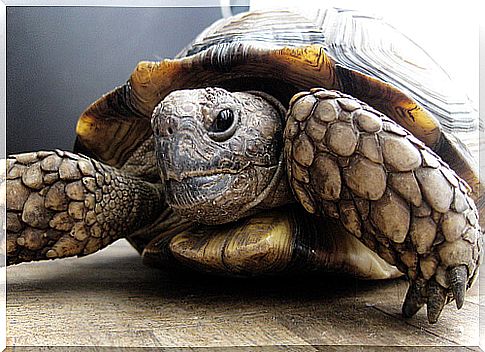
Other pets simply cannot live without us regardless of their socialization being little or no. For example, rabbits and fish require their owners to continuously feed them. Among other things, because they have been taken from their natural ecosystems to be placed in cages and fish tanks, respectively.
In short, the environment in which the animal operates is also a predominant factor in measuring its self-sufficiency.
Independent pets : in search of a balanced criterion
This does not mean that all is lost. In fact, there are trainings that can help our dogs to be a little more independent. On the other hand, cat self-sufficiency cannot be interpreted as evidence of detachment.
What we must understand is that when we domesticate an animal, we make it dependent on us in most cases. Either because they are attached at an existential level, or because we have removed them from their ecosystems, domestication implies some degree of dependency.
Main image source: Gabriel Vasquez


